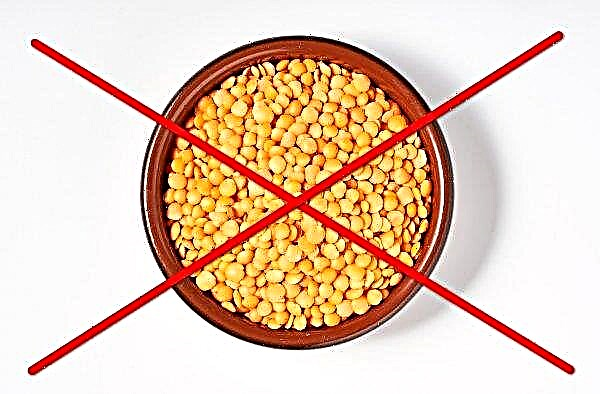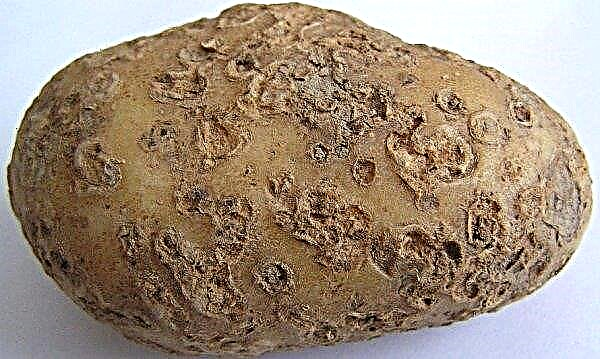With endocrine diabetes mellitus, it is important for patients to monitor the level of glucose in the body. A special diet for diabetics includes foods with a low glycemic index, such as carrots. The article will address the questions: what is the benefit of the root crop, as well as in what form and quantity it can be used by diabetics with type 2 disease.
The chemical composition and benefits of carrots in the disease
The main problem of diabetics is a lack of vitamins and minerals with a strict diet, which is recommended by a doctor.
Carrots are rich in many useful elements that positively affect the health of patients:
- Vitamin A (Retinol) - One of its functions is the neutralization of toxic forms of oxygen in the blood, the concentration of which increases with diabetes. Retinol is a participant in many vital processes: cell growth, strengthening the body's protective properties, and the production of sex hormones. Patients often have vision problems: the severity decreases, the destruction of retinal cells occurs. Retinol is one of the elements that prevents this.
- Beta carotene - an antioxidant that inhibits free radicals, lowers cholesterol and cleanses blood vessels. The element supports the heart muscle, the load on which in diabetes increases. Beta-carotene inhibits the development of diseases such as cataracts, glaucoma, fiber exfoliation.
- B vitamins - they are responsible for oxidative processes in the body, the exchange of vitamins, energy production, transmission of nerve impulses, decreased glucose, lipid and protein metabolism, and the synthesis of fatty acids.
- Cellulose - cleanses the body of undigested food residues, lowers cholesterol and sugar in the blood, improves intestinal function, reduces stomach acidity, reduces hunger, which allows you to adjust weight.
Did you know? Carrot, as a remedy, is mentioned in the writings of the great doctors of antiquity: Hippocrates and Dioscorides (military doctor).
The following minerals play the most important role in the synthesis of insulin, enhancing its action:
- manganese;
- chromium;
- zinc.
Manganese supports the liver, and zinc supports the pancreas. Chromium reduces cravings for sweets, makes it easier to tolerate a diet.
The sugar content in the root crop per 100 g is 4.74 g, and the calorie content is 35 kcal / 100 g, which allows you to use it daily.
In what form is it preferable to use
The main goal in the treatment of the disease is to avoid increasing insulin resistance. For this, a diet is prescribed in which there are products with a glycemic index (GI) of not higher than 69 units. GI, in simple words, is an indicator of the properties of carbohydrates in foods that change the level of glucose in the blood. The higher the GI, the higher the glucose level. It should be borne in mind that in a raw product, the GI is lower than after heat treatment.

Glycemic index of carrots:
- crude - up to 30 units;
- thermally processed - about 85 units.
This does not mean that boiled or stewed root crops are completely excluded from the menu, it just needs to be eaten less often and in small portions, not more than 100 g per day. To reduce GI, the root crop is not crushed for processing, leaving large pieces. More useful, according to nutritionists, brings a baked vegetable, and cooked with a peel. You can eat 2 medium-sized root crops per day.
The most useful dishes are raw root vegetables seasoned with any vegetable oil, which allows better absorption of retinol.
Important! Frequent consumption of foods with a GI above 70 units can cause a critical increase in glucose levels.
What dishes can be prepared
When cooking, carrots should be combined with products with low GI, not more than 45 units. At the same time, salads should not be seasoned with fatty sauces, low-fat yogurt or vegetable oil (olive, sunflower, linseed, sesame) are ideal for this.
Sesame Salad
Salad with sesame seeds is best seasoned with low-fat yogurt, since grains already contain vegetable oils. Sesame is useful in that it reduces the risk of developing atherosclerosis, strengthens bone tissue, increases the elasticity of muscle fibers, and contains useful fatty acids. GI of seeds - 35 units, per day it is undesirable to eat more than 12-15 g.
With nuts and sour cream
For a salad with sour cream, you should take a low-fat product, preferably 15%. Walnuts, despite the high calorie content, contribute to weight loss, if consumed with small handfuls, instead of a snack. With increased sugar, nuts significantly reduce its level and increase the body's sensitivity to insulin.
The product with regular use reduces the amount of bad cholesterol, improves memory and brain function, the function of the endocrine system. The glycemic index is 15 units, you can eat up to 60 g per day.
With apple
Apples contain a lot of fructose and glucose, hence the question arises: are they so useful for diabetics, do they increase sugar levels.
Important! To use with any type of diabetes should only be varieties of sour or sweet and sour varieties of apples with a green skin color.
Sugar content in acidic fruits is much lower, and with reasonable use (1 fruit per day) there will be no harm. The benefit is expressed in coarse dietary fiber, which "sweeps out" toxins and toxins, the breakdown products of drugs that have accumulated in the body and aggravate the course of diabetes. GI apple - about 30 units.
With seaweed
Sea kale, or kelp, is one of the foods most included in the diet of diabetics. Algae contains iodine necessary for the normal functioning of the endocrine gland in large quantities. The product stimulates the natural production of insulin in the body, prevents thrombosis and stabilizes glucose levels. The glycemic index of seaweed - 22 units.

Mashed potatoes
Carrot puree is made from raw root vegetables, boiled or baked. Heat-treated puree is undesirable to eat more than 3 times a week. It is not recommended to use in large quantities mashed raw vegetables, but it can be eaten more often.
The juice
Juice should be consumed only freshly squeezed. Unlike pulp, it does not contain coarse dietary fiber, therefore it is absorbed faster. In the juice there is a large concentration of vitamins, in particular retinol. However, it is recommended to use it no more than 150 ml per day and it is advisable to dilute it with water.
Did you know? One of the oldest recipes for carrot salad was found by archaeologists in the excavations of Ancient Rome. The cookbook dates from around the third century. BC e.
Possible contraindications and harm
Carrots in large quantities can harm the children's body and a person with impaired liver function, because the body can not cope with the processing of carotene. Frequent use of the root crop can stain the skin in a yellow tint.
Excessive amounts will lead to such painful symptoms:
- headache;
- loss of appetite;
- vomiting
- diarrhea;
- drowsiness;
- prostration.

- You can not eat root vegetables in the following conditions:
- gastric and duodenal ulcer;
- hepatitis;
- increased acidity of gastric juice;
- acute form of gastritis;
- inflammation of the small intestine;
- stones in the kidneys.
Summing up the above, we can say with confidence that carrots in the diet of a diabetic are an indispensable vegetable. Thanks to him, you can alleviate your condition, especially in the presence of concomitant diseases, the main thing: to comply with the rules and norms of use.












